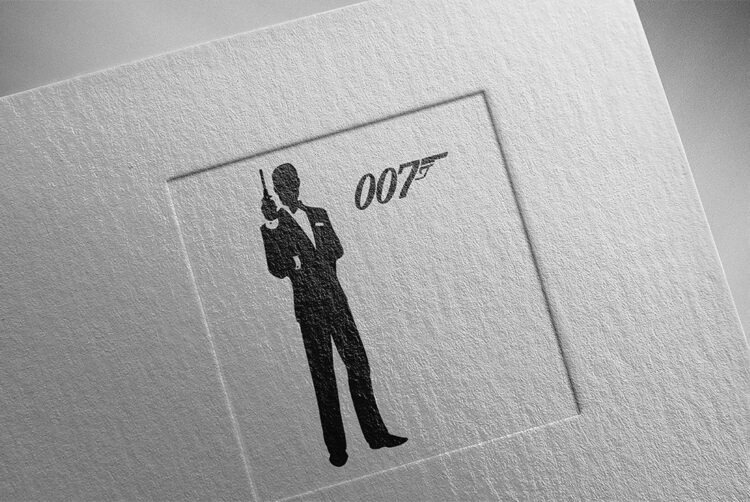Why the new James Bond film is the future of Media and Entertainment

Opinion
Simultaneous cinema and OTT releases, progressive product placement and the metaverse — Omnicom’s futurist Phil Rowley predicts what we can expect from the new James Bond.
With the news that either Aaron Taylor-Johnson or Henry Cavill is set to be announced as the new James Bond, you can almost hear the media cracking their knuckles in anticipation: ready to hit their keyboards to hammer out internet-melting exclusives, reveal early images from set and maybe post the odd salacious clickbait article.
But there’s a bigger story here, beyond who will play the titular character.
I think ‘James Bond 26’, or whatever its final moniker, will be emblematic of the future of media; an unofficial ‘state of the union’ showcasing how the technology and entertainment industries have finally fully amalgamated as we move towards the 2030s.
Here’s how we might see a franchise like James Bond become redolent of its time and representative of the media technologies and techniques available in the mid-to-late 2020s.
Franchises are content engines
In 2025, Bond 26 will be the first of the franchise to be conceived, filmed and released under Amazon’s auspices and will be wired into their entire cross-platform mega-ecosystem.
We should expect to see a simultaneous cinematic release and home release for Prime customers only, though it’s unlikely to be free. We might see the first-night premiere streamed live on Prime with interviews on the red carpet, together with standalone Amazon programming, like behind-the-scenes documentaries and interviews, ramping up the excitement in the lead up to the premiere. I’m not even sure traditional terrestrial channels will get a look in.
Following the template of other mega franchises, it’s also likely we’ll see a spin-off series to run on Prime, not featuring Bond, but based around some peripheral character or plot element to extend the mythos and build a ‘Bondverse’ like the Star Wars Universe or most relevant, The Continental, a spin-off featuring the hotel from the John Wick series. We may also see Bond content extensions across Twitch and Audible.
Ultimately, when you preside over a cross-platform media ecosystem like Amazon, becoming custodian of a mega-franchise grants you access to a content engine. And more content means more subscriptions, so expect them to crank that handle hard.
Merging with the Metaverse
That ecosystem will stretch into gaming too. Those old enough to remember Goldeneye on the Nintendo 64 — one of the greatest games ever created on any system — may recall how the game’s opening level offered a perfect recreation of the pre-credit film sequence, where Pierce Brosnan enters a Russian base through a toilet cubicle. Gamers could ‘play’ the scene from the film with terrifying accuracy.
Whilst game tie-ins started in the early 80s with E.T. for the Atari, recently we have witnessed the advent of 3-D volumetric scanning. Now scenes from film sets and their geography can be instantly and perfectly transposed into gaming environments. Hence why we’ve seen tools like Unreal Engine put to work to engineer film scenes and levels in their gaming spin-off at the same time, such is the disciplinary crossover.
More and more, films will exist inside a computer. With increasing concern over the carbon footprint of location shoots, and let’s face it, Bond films are famous for their luscious globe-trotting scenes, more filming will take place on ‘LED sets’ — giant video walls displaying programmable ultra-HD backgrounds that appear ‘as real’ in camera. (See this excellent video on how The Mandolorian was filmed quickly and inexpensively using LED sets and Unreal Engine in tandem. Also note the Bond reference, and about how far we’ve come since Dr No).
As part of future filming processes, it’s likely locations and actors too will be digitised on set to capture likenesses for their metaverse-ready digital twins and avatars. Consequently, Bond’s intellectual property – the cars, the martinis, the gadgets, the characters – may also turn up in other digital and virtual environments, whether in ‘open universe’ games like Fornite or Roblox, or predictably as NFTs for cross-platform use. In time, those transferable digitised assets — people, places, faces — will make the original Goldeneye recreation seem like Pong’s relationship to real-world tennis by comparison.
But the cultural exchange between film and gaming goes both ways. We may also see Bond 26’s real-world action sequences adopt the visual grammar of gaming. In John Wick, extended sequences of Keanu’s ‘Gun-Fu’, flowing and evolving like some ultra-violent ballet, owe as much to ‘first person shooters’ like Call of Duty and Star Wars Battlefront as they do to martial arts films.
The latest instalment, Chapter 4, features one long unbroken shot of bloody carnage which, according to director Chad Stahelski, is directly inspired by a game called Hong Kong Massacre.
No surprise his next project is reported to be a big screen adaptation of epic game The Ghost Of Tsushima. When he’s done with that, if I were the producers of Bond, I would be snapping up Chad to deliver a PG-13 Bond version of those hallmark gaming-inspired action sequences to tap into modern audience’s expectations.
Shifting demographics
On the subject of audiences, a Disney executive once told me every studio dreams of a ‘four quadrant film’, a property appealing to men and women, young and old, and every combination thereof.
Traditionally, 15- to 34-year-olds make up the bulk of cinema tickets sales, and the biggest quadrant, whilst older generations prefer to watch at home. But two things may start to erode that balance.
First, while cinema is experiencing a post-pandemic rebound, streaming exclusives, home premieres and binging ‘boxed sets’ are now a regular staple in our media diet, particularly among the younger generation.
Second, many Western nations have ageing populations, with birth rates plummeting and life expectancy soaring; a world with more grandparents than grandchildren.
With an ageing audience and more home viewing, does the ‘four quadrant film’ model still work? And does it matter? After all, a cinema ticket sale looks the same on the spreadsheet, wherever it comes from.
Well, yes, it does matter. Modern films are machine-tooled to align with the values and interests of the target audience. In that vein, in recent years the character of Bond has been seen to move with the times. Daniel Craig’s incarnation has dropped the smoking, fallen in love and [spoiler alert] fathered a child. The supporting cast too reflect modern mores, with Ben Whishaw’s character Q being openly gay and Moneypenny being a person of colour; a long way from the casual misogyny, subtle homophobia and lazy racism of the Connery era. The next boundary to be crossed could be a Bond film with a female director.
Though there will be continual resistance to Bond’s modern upgrading, natural ‘audience churn’, shall we call it, means there will be fewer and fewer people who will recall the anachronistic 60s and 70s Bond. However, beyond the four quadrants there is now a more potent cultural force exerting its power: the international box office.
Whilst Bond has always been a global phenomenon, certain markets have been tough to crack. Understanding this, in 2014 director Michael Bay targeted the lucrative China box office specifically by baking in Chinese filming locations and Chinese actors into Transformers: Age Of Extinction at script stage. The film bagged the number one spot in China, raking in nearly a quarter of a billion dollars in its first two weeks.
These new paradigms could dictate future Bond film storylines too, with the nature of Bond’s antagonist particularly revealing. For a while, it was always the Russians, but post-1989 it has variously been the North Koreans, drug cartels, media moguls and, latterly, lone madmen. In future, producers will need to be careful about who they designate the ‘bad guy’. As Foreign Policy magazine states, to maximise return in as many markets as possible, geopolitical spy thrillers now may be off limits.
The era of globalised media means a ‘four quadrant film’ may need to become a ‘five-quintant film’, with that fifth piece accounting for a worldwide audience with a myriad of differing cultural perspectives to satisfy. Also, annoyingly, a ‘five-quintant film’ is nowhere near as snappy a phrase.
Progressive product placement
Bond films have become synonymous with product placement from the Brosnan-era onwards — from Nokia to Heineken to Omega watches. The product deals of the future need to reflect the multiplicity of entry points into the franchise, finding opportunities not only in-shot or on-screen, but also in streaming and gaming.
Recent leaps forward in the aforementioned ‘virtual film sets’ or ‘volumes’ will allow a switching out of placements according to the market or audience — or when Connected TVs become more advanced — maybe tailoring placements to the individual user; a kind of televisual creative optimisation that a few media-tech companies like Ryff already offer.
Theme tune
Maybe an AI could write it. Just joking.
Brand Integration in 2025
The opportunity key media and entertainment properties present to a mid-2020s brand is one of supreme multichannel integration. Nothing new there, admittedly: multi-channel exploitation has been happening for decades.
But the sprawling network of cross-pollinated entry points — from streaming to gaming to progressive partnerships to new markets — requires brands to understand the importance of preparing for an exceedingly complex media future.
When Lady Macbeth is urging Macbeth “To beguile the time, / Look like the time” she is advising him to adopt the behaviour of others to not draw suspicion. But reframed and recontextualised, we could read this quote another way: to be successful in your era, be contemporary and embody the essence of ‘now’.
The new Bond film could be the essence of ‘now’ — where that ‘now’ is a collision of 21st Century values and mid-decade media technologies.
Brands can be a part of that too. But they need to be ready.

Phil Rowley is head of futures at Omnicom Media Group UK and the author of Hit the Switch: the Future of Sustainable Business. He writes a monthly column for The Media Leader about the future of media.



